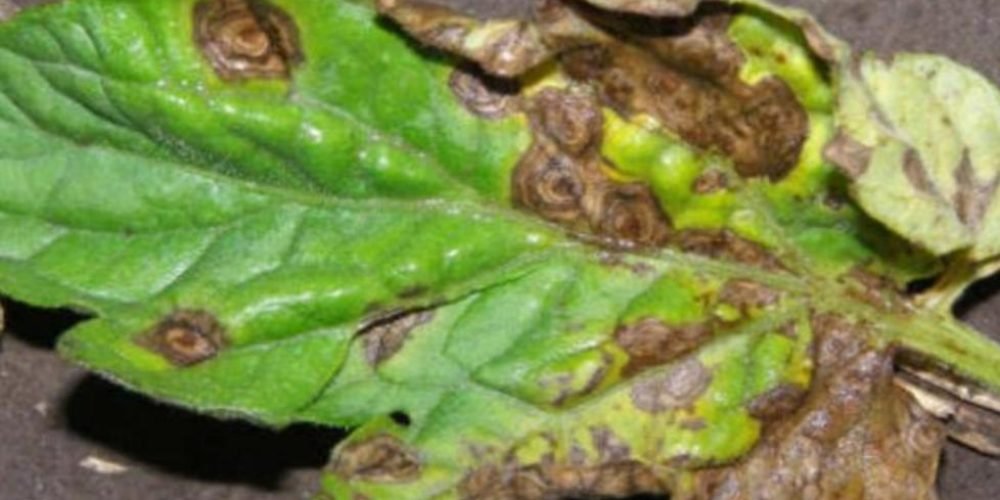Early blight (Alternaria) of tomatoes
Early blight: a fungal disease caused by the fungus Alternaria solani. This disease is most common on tomatoes.
The fungus can appear throughout the tomato growing cycle. It can cause significant damage to leaves, stems and fruits.
It is necessary to intervene early and quickly to put an end to the disease and prevent its progression.
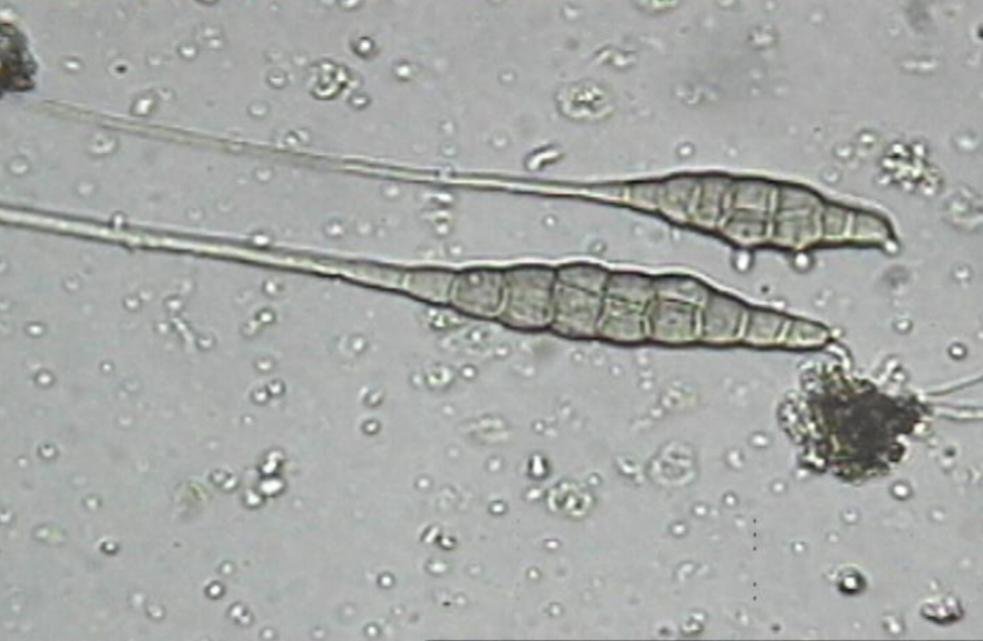
The disease is caused by the fungus Alternaria solani.
- Disease development cycle
Alternaria solani overwinters as conidial spores, especially on plant residues of previously planted crops, in infected seeds and/or in the soil as chlamydospores. When climatic conditions are suitable (temperature 20 to 30°C and humidity exceeding 70%) and with the presence of free water on the leaves, conidial spores germinate and their germ tubes penetrate the leaf membrane or through the pores. After the incubation period, the mycelium produces spores that ensure secondary infection.
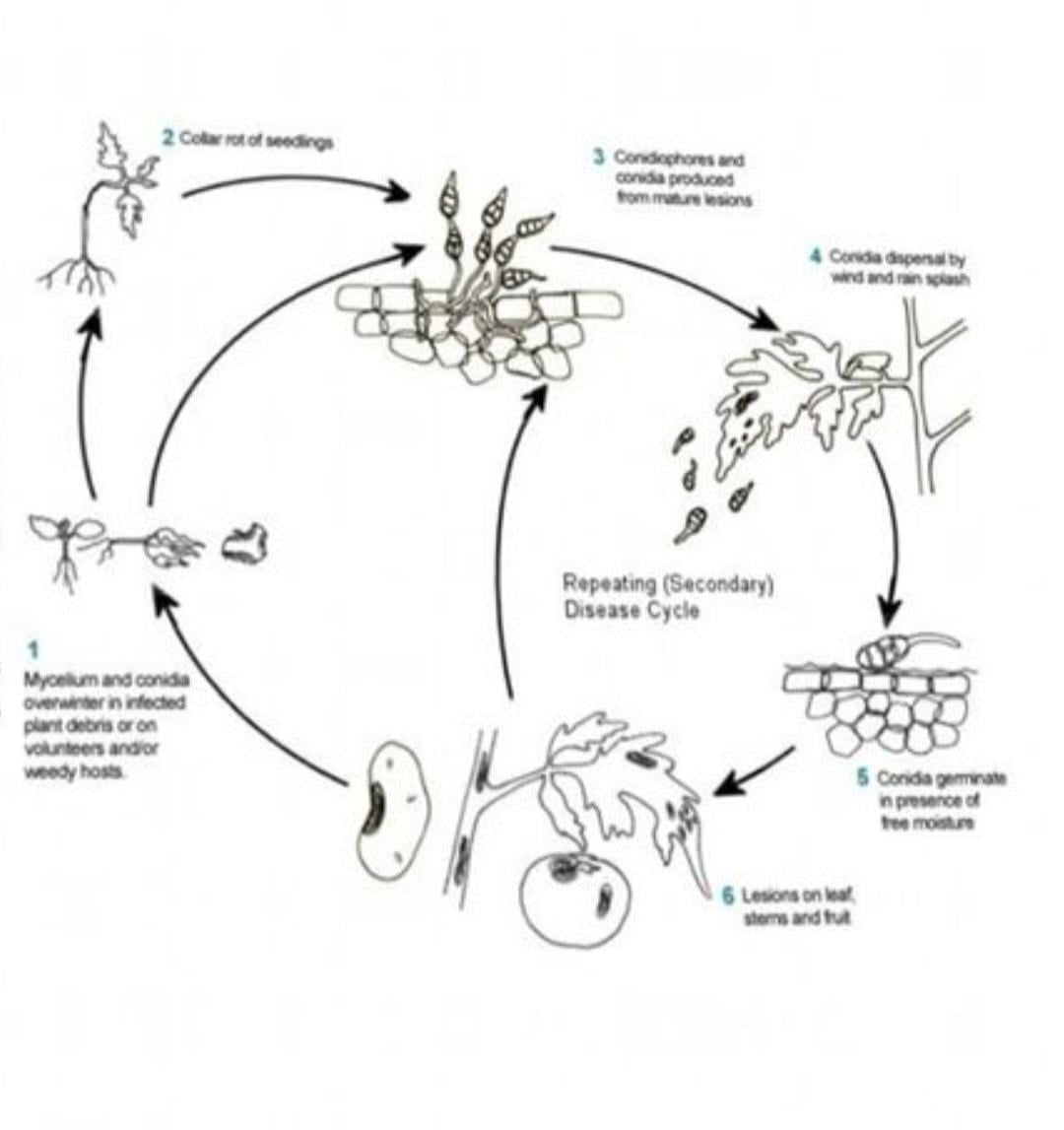
Disease course
- Symptoms and damages
On the leaves: dark brown, small circular spots appear with central rings inside. The spots are surrounded by a yellow halo. The leaves dry up and fall off.
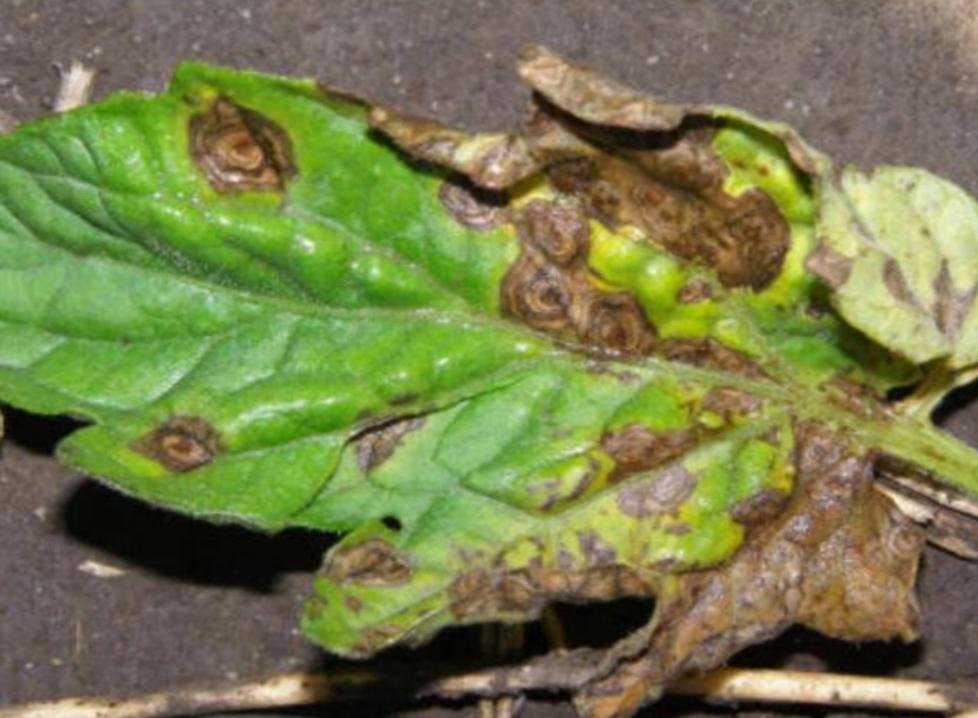
On the leaves
On the stems: black wounds appear, circular or oval with central rings. These spots then cover the entire stems resulting in poor stem strength.
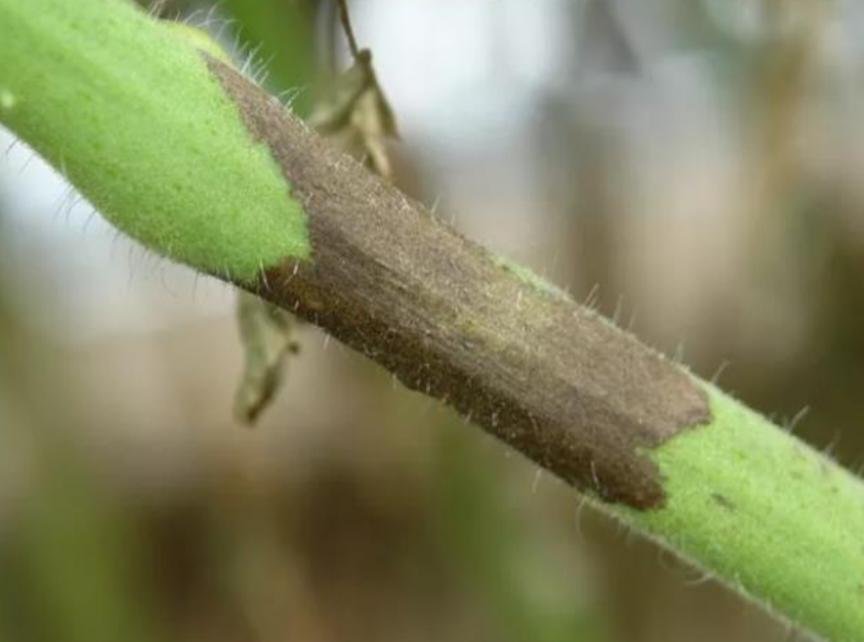
On the stems
On fruits: the appearance of caries at the level of sepals and peduncles. Black brown spots appear on the surface of the fruits, making them unfit for consumption. The disease spreads severely, causing fruit drop.
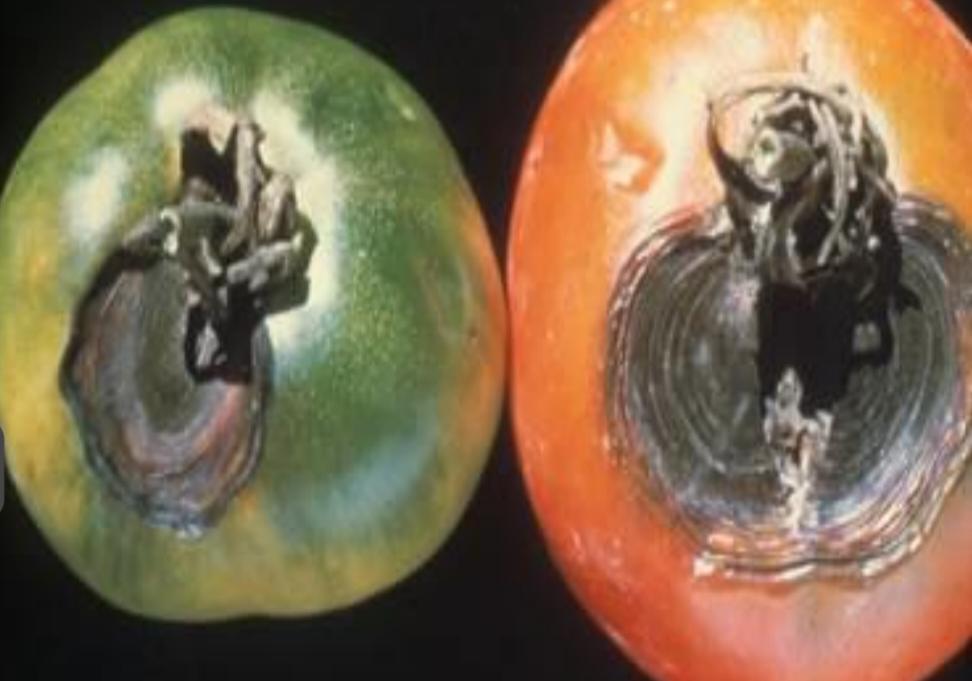
On the fruits
- Control strategy
Controlling alternariosis requires a program that combines preventive and chemical control.
- preventive measures:
- Disposing of crop residues at the end of the agricultural season.
- Use disease-free seeds and seedlings.
- Practice crop rotation to reduce the source of disease transmission.
- Getting rid of weeds and nightshades.
- Ensure good ventilation.
- Rationalization of nitrogen fertilization.
- Chemical control:
Seedling transplantation - foliar development: At this stage, if the climatic conditions are suitable for the development of the fungus (temperature 20 to 30° C), we recommend applying the treatment using Concento at a dose of 2 liters/ha. This treatment also ensures control of downy mildew (mildew).
Foliar development - nodule formation: At this stage, if the climatic conditions are suitable for the development of the fungus and to protect the leaves, we recommend applying the treatment using Scor at a dose of 0.5 l/ha. This treatment also ensures control of powdery mildew (oidium) and fruit rot.
Fruit enlargement - maturity: At this stage, if the climatic conditions are suitable for the development of the fungus. To protect the fruits, we recommend treatment with Priori Opti at a dose of 2.5 l/ha. This treatment also ensures control of downy mildew and some protection against botrytis.
- Agricultural treatment
There are a number of steps you can take during the growing season – or even before it starts – to limit the damage this fungus can do to your plants.
- Agricultural cycle application
Wait at least two years before planting in the same location again, as spores in the soil and any partially decomposed plants can persist for a year.
This is true even if you don't see any symptoms of early blight, as the pathogen can begin to accumulate without your knowledge.
This also applies to any crops in the Solanaceae family, such as eggplant, and potatoes which can also be infected by the fungus.
- Clearing the field of weeds of the Solanaceae family
Plants in the same tomato family (Solanaceae or nightshades) and spontaneously germinating tomato plants can also serve as hosts for Alternaria species. It can transmit the infection to tomato plants.
This is true for edible crops like potatoes, as well as hairy gooseberries, black gooseberries, and nettles, so be vigilant and keep these weeds out of your garden.
When removing weeds and autoflowers, be sure to destroy them – don't put them on the compost pile.
- Keep plants dry
Late blight spores require a lot of moisture to germinate. Since tomato plants are accustomed to growing in dry climates, they are unusually sensitive to water on their leaves, making them more susceptible to fungal infections than many other crops.
- Take every precaution possible to reduce the amount of moisture on your tomato plants. In the presence of germs, this can help prevent the fungal infection from getting worse.
- Try to avoid spraying plants on or around plants directly with water in wet weather.
- Using drip irrigation instead of watering from above will help keep the plants dry.
- Installing plants on stakes contributes to the treatment of early blight in tomatoes
When your plants are installed vertically, it helps:
- Create better airflow around her, helping her stay dry.
Another benefit is that there will be less contact between the leaves and the soil that could be contaminated with germs.
- Pruning branches at the bottom of the plant will also help.
However, don't wait until tomatoes are fully grown to install them. Where you should place the stakes at planting time. Because if you install them later, you will risk damaging the roots.
- Remove and destroy infected plants
If you see signs of early blight on one or two of your plants, it's best to pull them out and destroy the debris immediately. Don't put it on the compost pile.
You will then need to inspect the rest of your crops for symptoms and treat them accordingly.
- the reviewer:
- https://profert.dz/ar/?avada_portfolio=401
- https://idaatalaalm.com/%D8%B9%D9%84%D8%A7%D8%AC-%D8%A7%D9%84%D9%84%D9%81%D8%AD%D8%A9-%D8%A7%D9%84%D9%85%D8%A8%D9%83%D8%B1%D8%A9-%D9%81%D9%8A-%D8%A7%D9%84%D8%B7%D9%85%D8%A7%D8%B7%D9%85/
- https://alnabate.com/2021/03/02/%D9%85%D8%B1%D8%B6-%D8%A7%D9%84%D9%84%D9%81%D8%AD%D8%A9-%D8%A7%D9%84%D9%85%D8%A8%D9%83%D8%B1%D8%A9-%D8%A7%D9%84%D9%86%D8%AF%D9%88%D8%A9-%D8%A7%D9%84%D9%85%D8%A8%D9%83%D8%B1%D8%A9-%D8%B9%D9%84/



